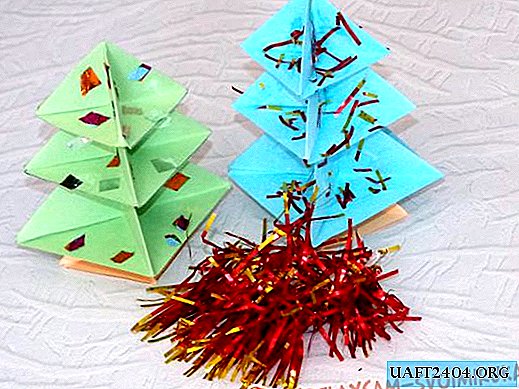Share
Pin
Tweet
Send
Share
Send

In the summer, many people, on a good, sunny weekend, go to their dachas or just to relax in nature. It happens that for the whole weekend, with an overnight stay. Many probably have indoor plants that need daily watering. As, for example, decorative pepper, or decorative cherry tomatoes. I have several such plants and it happens that I do not have time to water them on time, due to the circumstances. Literally in the evening, the leaves of the plants already hang sluggish, because it is too hot on the windowsill and moisture from the earth evaporates quickly. Someone asks relatives or neighbors to water. But recently, when buying fertilizers, I saw in the store for summer residents self-watering plastic pots for indoor plants. They are not expensive, in any case, not much more expensive than ordinary pots. But why not do it yourself? It is doubly pleasant to use a thing that you yourself have successfully constructed and assembled. The design is quite simple and straightforward. Having made one of these, and making sure of its effectiveness, I decided to upgrade all my pots with indoor plants in a similar way, and for one share this useful advice. So let's get started!
Will need
- Any plastic pot.
- A piece of plastic pipe with an inner diameter of approximately 10 mm. Can body from the marker.
- Hot glue burner or gun.
- Stationery knife.
- A thick nylon wick that will creep into the cooked tube.
- Drill and drill equal to the outer diameter of the tube.
Making a flower pot with autowatering
Now let's start manufacturing. First you need to drill a hole in the center of the pot.

Next, we insert a tube into the hole so that it protrudes 8-10 mm inside the pot so that it is possible to glue (or solder) the tube to the pot not only outside but also inside. For lack of a hot glue gun, I used a wood burner and just soldered one to the other.

The length of the tube is calculated from the height of the dishes in which you will pour water and put a pot of plants there. Now we attach a stand. The stand can be made of any plastic pipe, the main thing is that it (the stand) should be strong and stable, and it should also be 5-7 mm. longer than the tube. I made it out of a plastic jar, sawing off the neck and drilling the bottom.

We also sit the stand on hot glue or solder it.


We burn out holes in it for free access of water.

Take a nylon wick and thread it into the tube. From the outside we leave no more than one 5 mm, and from the inside you need about 3-4 heights of the pot itself.


Next, fill the ground with layers of a thickness of about 2-3 cm. We put one turn of the wick on each layer and continue until the wick ends.

Now take the plant and lay its root system in the center.

We fall asleep with the earth.

We fill with water the dishes you have chosen, into which we lower the pot with the plant. You can water the plant directly into this lower tank.

Now that you know that you don’t have time to water your plant day or evening, just pour more water into the tank before leaving and the plant will no longer suffer from dehydration, it will absorb water through the wick itself, as the earth dries. This pot will help out well if you are not at home for a couple of days. For longer periods, nevertheless, you will have to use outside help.
Well, you can also decorate the pot. More precisely, the earth in a pot. Knowing that it was no longer necessary for me to pour water directly onto the ground of the plant, I poured white sand and pebbles on top.

It looks very impressive! White sand can be typed in any pine forest.

However, after excruciatingly removing domesticated aphids, I no longer want to risk it, so I burned sand and stones in an iron can at the stake, thereby destroying the possible parasites there.
Share
Pin
Tweet
Send
Share
Send











